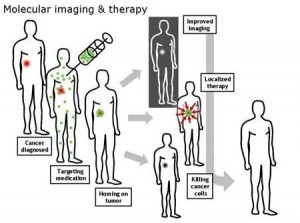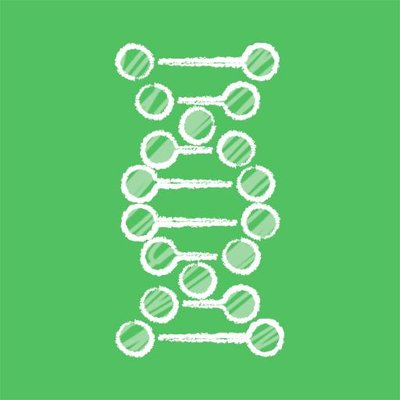Maya (Year 11), discusses the uses of nanotechnology in medicine, thinking about how far it has come and helped doctors. She also considers the dangerous aspects of using such small technology and the future benefits it may bring.
Technology in medicine has come far and with it the introduction of nanotechnology. Nanotechnology is the action of manipulating structures and properties at an atomic and molecular level as the technology is so small; it being one-billionth of a metre. This technology has many uses such as electronics, energy production and medicine and is useful in its diverse application. Nanotechnology is useful in medicine because of its size and how it interacts with biological molecules of the same proportion or larger. It is a valuable new tool that is being used for research and for combatting various diseases.
In medicine, nanotechnology is already being used in a wide variety of areas, the principle area being cancer treatment. In 2006 a report issued by NanoBiotech Pharma stated that developments related to nanotechnology would mostly be focused on cancer treatments. Thus, drugs such as Doxil, used to treat ovarian cancer will use nanotechnology to evade and surpass the possible effects of the immune system enabling drugs to be delivered to the disease-specific areas of the body. Nanotechnology is also helping in neuroscience where European researchers are currently using the technology to carry out electrical activity across dead brain tissue left behind by strokes and illnesses. The initial research was carried out to get a more in-depth analysis of the brain and to create more bio-compatible grids (a piece of technology that surgeons place in the brain to find where a seizure has taken place). Thus, it is more sophisticated than previous technologies which, when implanted, will not cause as much damage to existing brain tissue.
Beyond help in combatting cancer and research, nanotechnology is used in many areas in medicine from appetite control to medical tools, bone replacement and even hormone therapy. Nanotechnology is advancing all areas of medicine with Nano-sized particles enhancing new bone growth and additionally, there are even wound dressings that contain Nano-particles that allow for powerful microbial resistance. It is with these new developments that we are revolutionising the field of medicine, and with more advancements, we will be able to treat diseases as soon as they are detected.
Scientists are hoping that in the future nanotechnology can be used even further to stop chemotherapy altogether; fighting cancer by using gold and silica particles combined with nanotechnology to bind with the mutated cells in the body and then use infra-red lasers to heat up the gold particles and kill the tumour cells. This application would be beneficial as it would reduce the risk of surrounding cells being damaged as the laser would not affect them as much as the chemotherapy would.
In other areas, nanotechnology is further developing with diagnostics and medical data collection. This means that by using this technology, doctors would be able to look for the damaged genes that are associated with particular cancers and screen the tumour tissue faster and earlier than before. This process involves the Nano-scale devices being distributed through the body to detect chemical changes. There is also an external scan by use of quantum dots on the DNA of a patient which is then sequenced to check if they carry a particular debilitating genome, therefore providing a quicker and easier method for doctors to check in detail if a patient has contracted any illnesses or diseases. Furthermore, doctors will be able to gain a further in-depth analysis and understanding of the body by use of nanotechnology which surpasses the information found from x-rays and scans.
While this is a great start for nanotechnology, there is still little known about how some of the technology might affect the body. Insoluble nanotechnology for example, could have a high risk of building up in organs as they cannot diffuse into the bloodstream. Or as the nanoparticles are so small, there is no controlling where they could go, which might lead to Nano-particles entering cells and even their nuclei, which could be very dangerous for the patient. The science and technology committee from the House of Lords have reported concerns about nanotechnology on human health, stating that sufficient research has not been conducted on “understanding the behaviour and toxicology of nanomaterials” and it has not been given enough priority especially with the speed at which nanotechnology is being produced.
Nanotechnology is advancing medical treatment at a rapid rate, with new innovative technologies approved each year to help combat illnesses and diseases. Whilst more research needs to be conducted, the application of Nano-medicine will provide a platform of projected benefits that has potential to be valuable. Overall with the great burden that conditions like cancer, Alzheimer’s, HIV and cardiovascular diseases impose on the current healthcare systems, nano-technology will revolutionise healthcare with its advances techniques in the future as it progresses.

